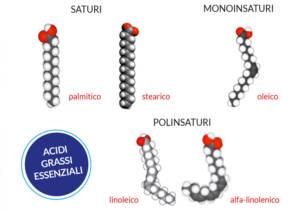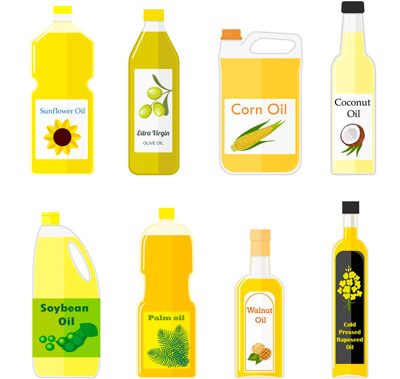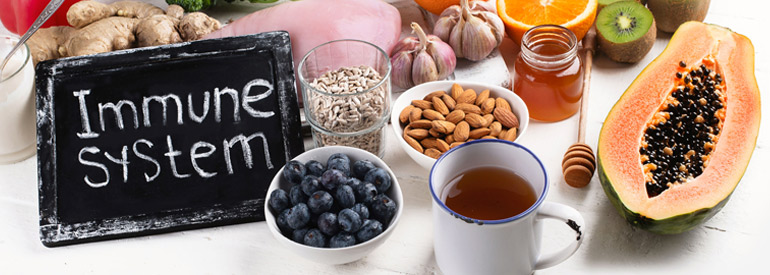
The oil in the kitchen

Oil and World Food Day 2020
Today is World Food Day 2020 and we have decided to dedicate it to oils, pillars of our diet and inevitable actors of all our culinary chores !
Indeed, one thing that is never missing in any dish, be it a condiment or part of the cooking process, is oil. In fact, it is also due to it that, when we eat, we have a pleasant organoleptic experience, in terms of texture, flavor, smell or structure.
Due to a favorable geographical situation, the Mediterranean agro-food tradition fit the extra virgin olive in the position of undisputed protagonist of all vegetable oils. However, in the latest years we have seen a multitude of oils made from other plants appear on grocery shelves, some with exotic names.
This abundance of availability can generate confusion considering that juggling with many options means marrying many criteria, the objective ones (e.g. which oil for which type of cooking) with the subjective ones, given by tastes, habits and, sometimes, even the economical incomes.
The LIPIDOMIC STANDARD for choosing the right oil
In fact, we believe that the most important of all is the criterion based on the benefits for our body.
 Oil is a concentrate of fats which, together with proteins, sugars, vitamins and minerals, constitute the fundamental nutrients to be consumed every day with food.
Oil is a concentrate of fats which, together with proteins, sugars, vitamins and minerals, constitute the fundamental nutrients to be consumed every day with food.
Fats are divided into three families based on their chemical structure:
- saturated fatty acids
- monounsaturated fatty acids
- omega-6 and omega-3 polyunsaturated fatty acids
This high variety that we encounter in nature is reflected in the composition of the lipids of the membranes of our cells, in which the three families are well represented. There is more: the individual fatty acids are present in well-defined quantities and this is because in biology nothing is left to chance and everything is carefully balanced [1].
The health of all our cells also depends on this excellent composition, which we define membrane lipidomic balance to which we can contribute with nutrition and which we want to propose as a criterion for choosing the oils we use on the table.
LIPIDOMICALLY important OILS
The lipidomic analysis of the membrane of the mature erythrocyte (according to the accredited MEM_LIP1 method) can highlight excesses or deficiencies in the individual lipid elements of the membrane compared to the optimal composition, directing towards rebalancing with a nutritional and nutraceutical approach.
The concept of balance between the families of fatty acids in the cell membrane can be used in the choice of oil to bring to the table. In fact, since each oil contains a specific and unique proportion of fatty acids, it is possible to make the appropriate nutritional choices with the aim of ensuring the correct lipid intake not only in terms of quantity, but also, and above all, of quality.
SATURATED fatty acids are lipids mainly present in fats of animal origin and that we can produce in our body thanks to cellular enzymes. It is not necessary to take them with food: if we need them, our body can produce them.
Oils with a high SFA content:
- palm oil (47% SFA)
- coconut oil (87% SFA). It should be noted that 61% is composed of medium-chain saturated fatty acids, more easily absorbed, with benefits on the metabolism and in the intestine.
• OILS rich in MONOUNSATURATED FATTY ACIDS (MUFA)
In the case of a diet high in saturated fat or high in sugar / carbohydrates, our metabolism responds by producing monounsaturated fatty acids in an attempt to balance saturated fat overload. The resulting cellular stress is high, straining the liver function to the point of compromising the efficiency of our enzymatic systems. Taking MUFA fatty acids, mainly oleic acid (c18: 1, omega-9), with the diet allows the stress situation generated to be brought back into balance.
Oils with a high MUFA content:
- extra virgin olive oil (74.3% MUFA). With its high content of vitamin A, vitamin E and polyphenols it is the undisputed “King” of our table
- avocado oil (70.6% MUFA). It can be a valid option for the palmitoleic acid content (c16: 1, omega-7) equal to 2.7%. In this case, however, the content of linoleic acid LA (12.5%) must also be taken into consideration, which helps to define an omega-6: omega-3 ratio = 13: 1 (see later)
- rapeseed oil (63.5% MUFA). Consumption is not recommended due to its poor quality and to contain erucic acid (1.25%) which has recently been analyzed by the EFSA (European Food Safety Authority) in terms of toxicity [2]
- high oleic sunflower oil (> 70% MUFA): this is a recent “industrial” alternative to extra virgin olive oil, cheaper, but with a comparable MUFA content. It is used in packaged products and in “healthier” frying which, needless to say, should always be replaced with homemade preparations in which to use extra virgin olive oil.
• OILS rich in POLYUNSATURATED FATTY ACIDS (PUFA omega-6 and omega-3)
In the PUFA family there are so-called essential fatty acids, that is, which we must necessarily take with our diet. For these, EFSA has defined the daily requirement:
- LA linoleic acid (18: 2, omega-6): 10g per day
- alpha-linolenic acid ALA (18: 3, omega-3): 2g per day
Notwithstanding to these recommendations, we must know that the diet of industrialized countries is characterized by a very high consumption of omega-6 compared to omega-3 [3]. If at an evolutionary level, our body is “calibrated” on an optimal proportion of omega-6: omega-3 of 4: 1, nowadays, with our diet we reach a ratio of 20: 1! It is therefore easy to understand that a valid criterion for choosing the type of oil to use is based on the omega-6: omega-3 ratio.
Oils with a high omega-6 content:
- peanut oil (28% LA, 0% ALA)
- sunflower oil (52.9% LA, 0.4% ALA, omega-6: omega-3 ratio = 130: 1)
- sesame oil (44.2% LA, 0.3% ALA, omega-6: omega-3 ratio = 147: 1)
- corn oil (52.2% LA, 0.6% ALA, omega-6: omega-3 ratio = 87: 1)
- rice oil (33.4% LA, 1.6% ALA, omega-6: omega-3 ratio = 21: 1)
- soybean oil (54.1% LA, 8% ALA, omega-6: omega-3 ratio = 7: 1)
Their consumption must be severely limited as, in general, other sources of omega-6 are already present in the modern diet (meat, eggs, dried fruit, vegetables) and we risk favoring the imbalance with respect to omega-3s.
Oils with a high omega-3 content:
- flaxseed oil (14.4% LA, 53.4% ALA, omega-6: omega-3 ratio 0.3:1)
- perilla oil (approx.14% LA, approx. 59% ALA, omega-6: omega-3 ratio 0.2:1) [4]
These oils are of crucial importance in helping rebalance in the event of omega-3 deficiencies or an excess of omega-6 and therefore in the control of inflammatory states.
In search of balance
Given the wide range of the topic, in this short article we have deliberately overlook the analysis of the contribution of micronutrients and antioxidants, of the methods of obtaining (squeezing, chemical extraction, refining …) and consequently of the trans-fat content of each oil, arguments that certainly enrich the health-based choice criterion with different aspects.
Taking into consideration that each family of fatty acids participates in the complex biochemical system that keeps us alive and healthy and that deficiencies or excesses can contribute to the onset of cardiovascular, metabolic, inflammatory, neurodegenerative, autoimmune diseases … [5], we preferred to focus the classification of food oils on the concept of lipidomic equilibrium of the cell membrane as it derives the correct functioning of the organs and tissues of our organism and therefore our well-being.
From this point of view, with a few and simple notions of cellular physiology we have seen that a fundamental help comes from the oils we choose to consume and alternate on the table not only for seasoning, but also to satisfy our molecular needs, just as if they were of supplements [6].
References:
The nutritional values of the oils were obtained from the databases of CREA, Center for Research on Food and Nutrition (formerly INRAN) or, in the absence of information, from the FoodData Central of the US Department of Agriculture.
[1] Lauritzen L et al. Progress in Lipid Research (2001) 40, 1-94
[2] EFSA Journal (2016) 14(11), 4593, 173
[3] Simopoulos AP CRC Press (1999), 65–88
[4] Asif M. Orient Pharm Exp Med (2011) 11(1), 51–59
[5] by way of example: Hulbert AJ et al. Biol. Rev. (2005) 80, 155–169
[6] we borrow the definition given by Directive 2002/46 / EC, implemented with Legislative Decree No. 169 of 21 May 2004, which defines supplements as “food products intended to integrate the common diet and which constitute a concentrated source of nutrients, such as vitamins and minerals, or other substances having a nutritional or physiological effect, in particular, but not exclusively, amino acids, essential fatty acids, fibers and extracts of vegetable origin, both single and multi-compound, in pre-dosed forms”
Photo: 123RF Archivio Fotografico: 81380616 ©akkamulator / 123rf.com – 56795387 ©lizavetas / 123rf.com
- On 16 October 2020




